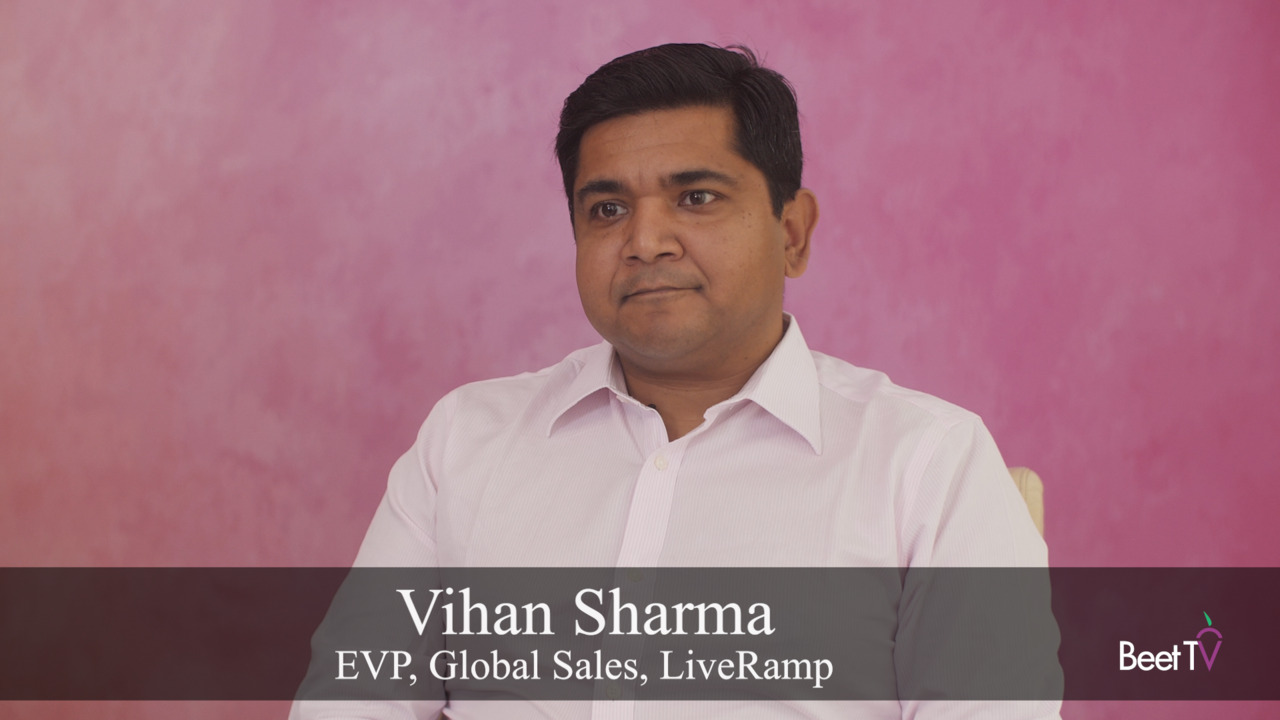
CANNES — In the dynamic world of digital advertising, ‘clean rooms’ are starting to take center stage.
Born out of the need for privacy compliance with GDPR in Europe, clean rooms are shaping up to be more than just a feature, but a critical tool in the data collaboration landscape.
In this video interview with Jon Watts for Beet.TV, Vihan Sharma, EVP, Global Sales, LiveRamp, explains how the software fits into the landscape.
Putting it together
“Cleam rooms started in Europe primarily because in 2018 when GDPR came in, advertisers were looking to find a way to securely connect their data with their partners,” says Sharma.
However, understanding the nuances and challenges of privacy and clean rooms is a slow process. These platforms don’t all come with the same capabilities, and this new market’s adoption has been slower than expected, Sharma says. Nevertheless, he is optimistic. “Clean rooms are here to stay and have a bright future in the next five years,” he affirms.
Sharma believes that clean rooms are an essential part of the future data collaboration architecture, but not the entire structure. “The most important part is that advertisers need to be able to create partnerships which are meaningful for their consumers, so that they can target and measure effectively,” he explains.
The Symbiosis of Clean Rooms and Data Assets
Clean rooms secure data, but they don’t enable measurements or analytics. “You need partners in the identity space and other technology around the clean room to make sense of the collaboration that you’re doing with your partners,” Sharma adds.
Advertisers need to understand consumer touchpoints under their control and map the journey outside their domain to influence anything beyond.
“You are never ever going to have a customer 360 degree view of the consumer by your own self. So in order to better understand the consumers, in order to better create advertising campaigns, you need to understand the context, the user, and the different media partners that are available,” Sharma explains. This understanding is why clean rooms and data assets go hand in hand.
The Need for Standardization
When it comes to standardization in the clean room ecosystem, Sharma holds that it’s more about outcome than process.
You can’t really expect a retailer to function in the same way as a financial services institution,” he says. “They don’t really have the same privacy constraints. They don’t have the same consent mechanisms.
“So, standardization needs to happen at the industry level rather than the technology layer level.”
The Future of Clean Rooms
As for the future, Sharma predicts a proliferation of networks, with clean rooms at the heart of the ecosystem.
He says the auto and travel brand categories are adopting the tech “because they’re going to get new data sets, which they don’t have access to today”.
He believes that the growth of these networks will make the industry more powerful and unique. “In 2025, clean rooms are going to be at the heart of the ecosystem, in order to create networks.”